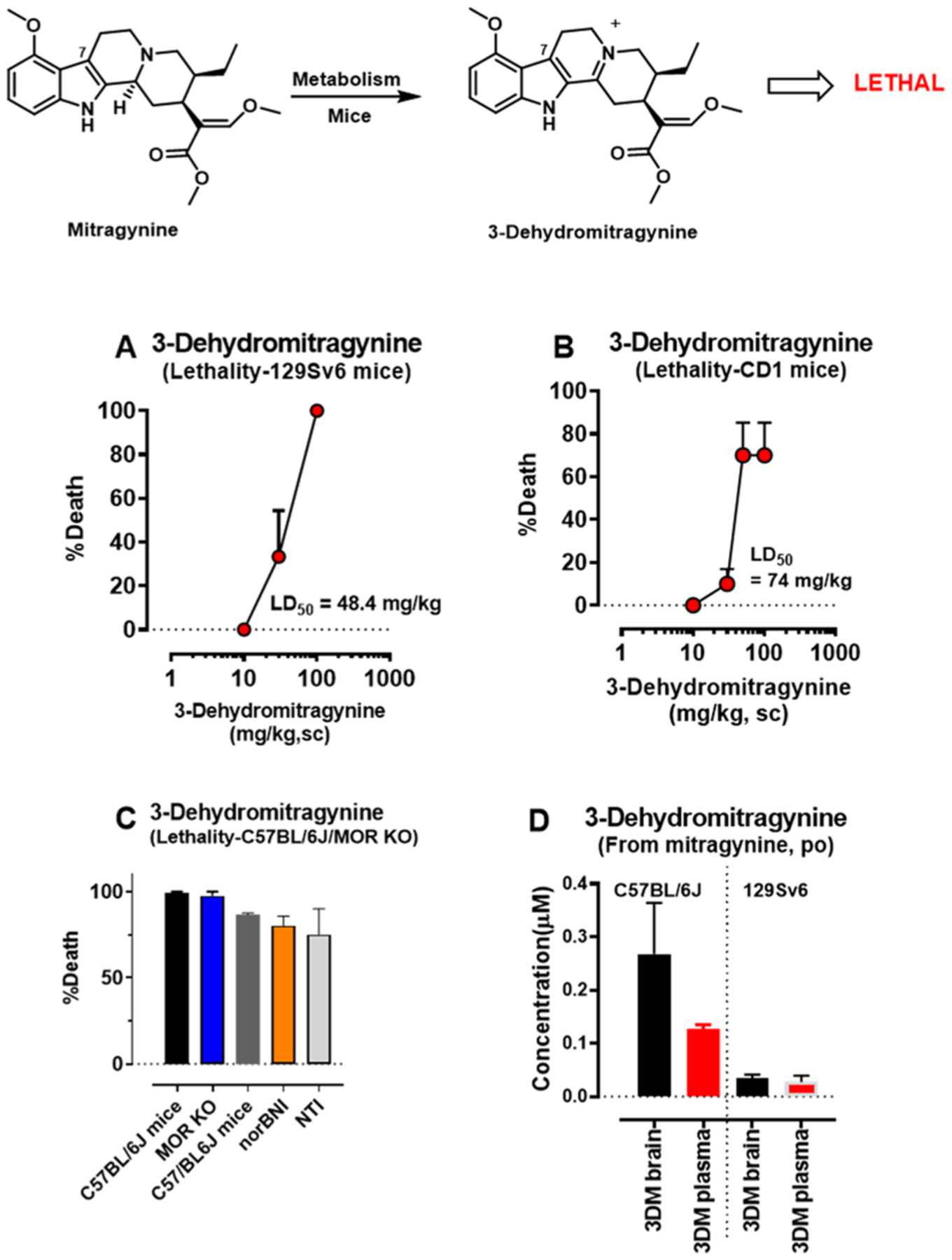Figure 7.

Detection of metabolic product 3-dehydromitragynine in brain and plasma in mice and its toxicity. Groups of mice (n = 6 per dose) were given different doses of sc 3DM to 129Sv6 mice (A) or CD1 mice (B) and tested for lethality. Similarly, C57BL/6J mice (n = 4) at 50 mg/kg, sc and MOR KO mice (n = 4) (C) at 50 mg/kg, sc and C57BL/6J mice pretreated with norBNI (10 mg/kg, sc; n = 15) for 24 h and NTI (20 mg/kg, sc; n = 12) for 15 min were tested for lethality. While 3-dehydromitragynine was not an antinociceptive agent, it was found to be toxic with a LD50 of 48.4 (20.85–129.8) mg/kg in 129Sv6 (A) and 74 (48.08–120.5) mg/kg in CD1 mice (B). It caused 100% lethality at 50 mg/kg, sc in C57BL/6J mice (C) and at 50 mg/kg, sc in MOR KO mice, suggesting that the toxicity is not MOR-mediated. Similarly, in the presence of KOR antagonist (nor-BNI) and DOR antagonist (NTI), the lethality was still observed. Results suggest lethality is opioid receptor-independent. The metabolite 3DM was detected at 0.035 ± 0.01 and 0.09 ± 0.025 μM in the brain of 129Sv6 and C57BL/6J mice when mice were dosed at ED80 po antinociceptive doses of mitragynine (D). Similarly, about 0.0275 ± 0.01 and 0.037 ± 0.01 μM were seen in plasma of 129Sv6 and C57BL/6J mice (D).
